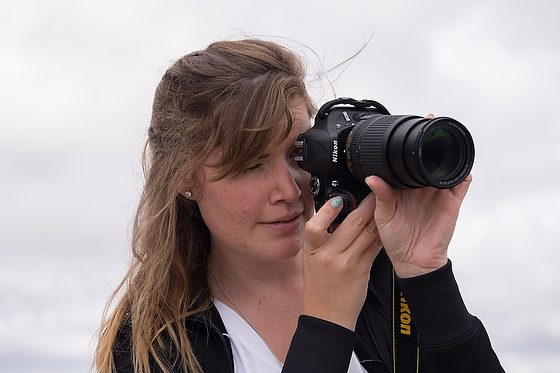 |
| Nikon D4, AF-S NIKKOR 14-24mm f/2.8G ED, ISO 2200, ƒ/5.6, 1/500 |
Primes vs. zooms. Well, that is not a simple one-size-fits.
Don’t be the photographer who always says prime or zoom–you will be like the guy who uses a hammer to fix everything.
If you know what and how you like to shoot, it is much easier to find the best lenses.
To get a lot of variety with a prime lens requires you to move a great deal more with a subject to get a variety of images.
For example, a prime works excellent if you are looking for a portrait lens. You have more control of the subject. You can have them stay still, and then you can shoot wide open and get that silky bokeh. When shooting wide open apertures like ƒ/1.4 and the closer you are to the subject, just taking a breath can cause you to move and miss your focus.
 |
| Nikon D4, Nikon 85mm f/1.4 AF-D, ISO 12800, ƒ/1.8, 1/250 |
However, if you are shooting more photojournalistic and you need to capture a story in which you cannot stop the people and have them pose as well as needing more variety of photos you might want to consider zooms over primes.
I shoot a lot with a 28-300mm lens which lets me move quickly and not worry too much about do I have the right focal length on the lens. In other words, I get the shot more often than had I been switching lenses.
Not all primes are better than zooms, and with today’s lens profiles built into software like Adobe PhotoShop and Lightroom, the software can practically make what was inferior glass due to chromatic aberrations perfect. For example, lens Profile Corrections is a tool within Lightroom’s Develop Module that allows fixing such lens problems as distortion, chromatic aberration, vignetting, and perspective correction “non-destructively” without leaving Lightroom.
My point here is that it is not as big of an issue as it was in film days.
The primary issue that most photographers consider is the variety of images they like to shoot. If you are shooting all these photos, for example, a couple of zooms would make it easier to get the pictures than primes.
Opener: Sets the scene for the story
Decisive moment: The one moment that can by itself tell the story
Details: Besides being like visual candy to the story, help often with transitions–especially in multimedia packages
Sequences: give a little variety to a situation
High overall shot: Gives a good perspective to how the elements all fit together
Closer: Besides the classic shot of the cowboy riding off into the sunset there are other visual ways to help bring the story to a close
Portraits: These photos are great for introducing the characters of the story
 |
| Nikon D4, Nikon 85mm f/1.4 AF-D, ISO 400, ƒ/1.4, 1/125 |
However, if you are shooting a headshot, then a prime like the Nikon 85mm ƒ/1.8 would be my choice.
If money is of significant concern, I will go with zooms because I can have more focal length choices.
Zoom or Prime?
 |
| Photo A |
Here is the same situation with the other lens
 |
| Photo B |
Now here is one more that you need to compare even more
 |
| Photo C |
These two lenses, the 1) Nikon 85mm f/1.4 AF-D or 2) AF-S NIKKOR 28-300mm f/3.5-5.6G ED VR, shot these three photos.
- Photo A – Nikon D4, 28-300mm (300), ISO 100, ƒ/5.6, 1/25 – Off-camera fill-flash using the Nikon SB-900. The Flash is on the hot shoe of the Pocketwizard TT5. They are triggered by the Mini TT1 on the Camera with the AC3 to control the output of the Flash. Flash is -2 EV, and the Camera is -1 EV.
- Photo B – Nikon D4, 85mm ƒ/1.4, ISO 100, ƒ/5.6, 1/50 – Off-camera fill-flash using the Nikon SB-900. The Flash is on the Pocketwizard TT5 and is triggered by the Mini TT1 on the Camera with the AC3 to control the output of the Flash. Flash is -2 EV, and the Camera is -1 EV.
- Photo C – Nikon D4, 85mm ƒ/1.4, ISO 100, ƒ/1.4, 1/50 – Off-camera fill-flash using the Nikon SB-900. The Flash is on the Pocketwizard TT5 and is triggered by the Mini TT1 on the Camera with the AC3 to control the output of the Flash. Flash is -2 EV, and the Camera is -1 EV.
If you are still confused, then rent these lenses before buying.
By the way, I own both.




